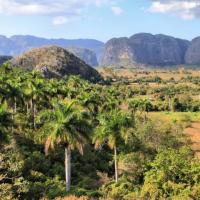The Holbrook Explorer

Books to Read Before You Travel to Cuba
Books to Read Before You Travel to Cuba
Here is a selection of books you may want to consider reading before your journey to Cuba.
Wildlife of the Caribbean
Herbert A. Raffaele
Following an introductory section which reports on the state the Caribbean’s fauna and flora and conservation efforts thereon, this guide includes 600 vivid color images of 451 species of plants, birds, mammals, fish and seashells. A truly comprehensive guide to the area.
A Photographic Guide to Birds of the West Indies
Allan Sander & G. Michael Flieg
A compact and convenient guide to more than 250 birds, covering Jamaica, Cuba, the Bahamas, Dominica, Hispanola, the Virgin Islands, San Andres, Providencia, and the Lesser Antilles. Includes 306 color photographs and maps of the region.
Birds of Cuba
Orlando Garrido, Arturo Kirkconnell, & Lester Short
A compact field guide to the birds of Cuba, featuring 51 color plates, detailed species accounts, and 144 local maps. In addition, it includes a brief discussion of biogeography, habitats and birdwatching on the island.
GUIDEBOOKS
Cuba Handbook
Christopher P. Baker
A detailed guide to both Havana and the provinces, filled with plenty of practical information, as well as background on the slave trade, Ernest Hemingway and the Revolution.
Knopf Guide Cuba
Knopf Guide
A guide to Cuba, packed with high quality color photographs, drawings, illustrations and maps.
Footprint Cuba Handbook
Sarah Cameron
A detailed, comprehensive guide to travel in Cuba by the venerable British publishers of the “South American Handbook.”
National Geographic Cuba
Christopher Baker
A traveler’s guide to the history, nature, culture, and attractions of Cuba, thoroughly illustrated in dependable National Geographic style.
HISTORY & CULTURE
The Reader’s Companion to Cuba
Alan Ryan (Editor)
An anthology of travel writing on Cuba, beginning with 19th century writers like Anthony Trollope, John Muir and Frederic Remington and continuing on with Anais Nin and Langston Hughes. It’s full of surprising gems about baseball, the mob, rumba and revolution.
Cuba in Focus: A Guide to the People, Politics and Culture
Emily Hatchwell & Simon Calder
A compact overview of the history, culture and changing economy of Cuba. With frank sympathy for Castro and his enduring legacy, the authors’ give a fair and detailed assessment of the island, its contradictions and prospects for the immediate future.
Cuba, What Everyone Needs to Know
Julia Sweig
Director for Latin America Studies at the Council on Foreign Relations, Sweig traces the geography, history and identity of Cuba in this admirably succinct history of the island nation and its role in world affairs.
Cuba
Jeffrey Milstein
Milstein’s beautiful collection of 100 photographs captures the colors, textures and people of vivid and gritty urban Cuba. His images provide a portrait of everyday life.
Cuba, 400 Years of Architectural Heritage
Rachel Carley & Andrea Brizzi
A sweeping survey of the island’s architecture, featuring three hundred gorgeous color photographs.
Cuba or the Pursuit of Freedom
Hugh Thomas
World class historian Hugh Thomas spent 10 years researching this monumental book. Organized chronologically, it follows Cuba from 1762 through the colonial period and the revolution to its present friendless state.


